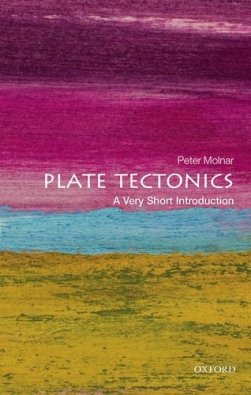
The story of how Alfred Wegener’s controversial but fruitful theory of continental drift, proposed in 1912, morphed during the 1960s into today’s widely accepted theory of plate tectonics is well known in outline; much less so in detail. Unlike continental drift, dozens of geologists, geophysicists and others contributed to plate tectonics, many of them personally known to Peter Molnar, who was a US graduate student in the late 1960s and is determined to give everyone due credit in Plate Tectonics (notwithstanding an index that omits oceanographer Bruce Heezen). But this makes for a challenging task when writing in the format of a Very Short Introduction, the prolific Oxford University Press series intended not for specialists but for non-specialists wanting a reliable, readable overview of an unfamiliar field.
Often, Molnar’s introduction works well, despite passages of semi-technical argument that will cause head-scratching among its intended readership. In the initial chapter on the theory’s basic ideas, Molnar observes an interesting irony: “whereas Wegener focused on continents …, plate tectonics enjoys its widespread success largely in the regions below deep oceans; … it fails most spectacularly within some portions of continents.” The following chapter on seafloor spreading and magnetic anomalies is the best in the book. History here comes alive, as the radical 1963 hypothesis of Frederick Vine and Drummond Matthews receives increasing experimental confirmation from measurements of the seafloor in many parts of the world.
But subsequent chapters never satisfactorily clarify how the distinct tectonic plates now in use came to be defined—which in turn weakens the discussion of the admitted failures of plate tectonics in explaining, for example, some mountain ranges, earthquakes and volcanoes. Molnar reveals how major Himalayan earthquakes mostly do not occur on the plate boundary between the India and the Eurasia plates. However, he writes not a word about the severe Missouri earthquakes in the North America plate in 1811-12 far from plate boundaries. Nor does he mention the unpredicted volcanism of the Hawaiian islands in the middle of the Pacific plate, currently explained by the hot-spot theory of J. Tuzo Wilson (who is of course discussed for his recognition of transform faults). Moreover, the 1886 earthquake in Charleston, South Carolina, is stated to have rung church bells in far-off Boston, Massachusetts. Oddly enough, precisely the same claim has long been made for the 1811-12 earthquakes, even by the US Geological Survey. Yet, research in the Boston press has thrown up no evidence to support either myth.
Reviewed by Andrew Robinson.
PLATE TECTONICS: A VERY SHORT INTRODUCTION by PETER MOLNAR, 2015.
Published by: Oxford University Press 136pp (pbk) ISBN: 9780198728269 List Price: £7.99.
W: http://ukcatalogue.oup.com/